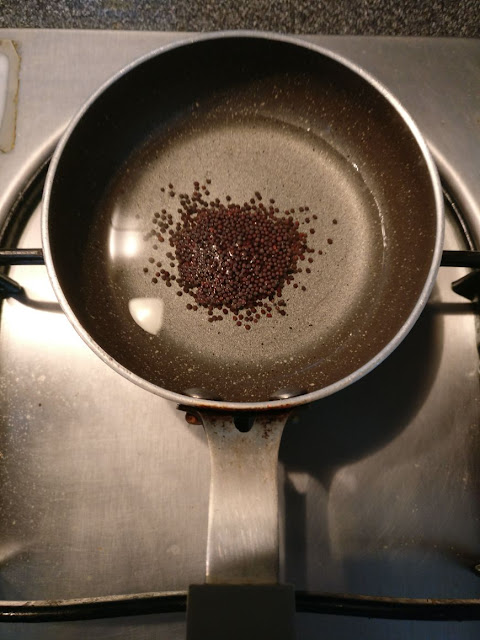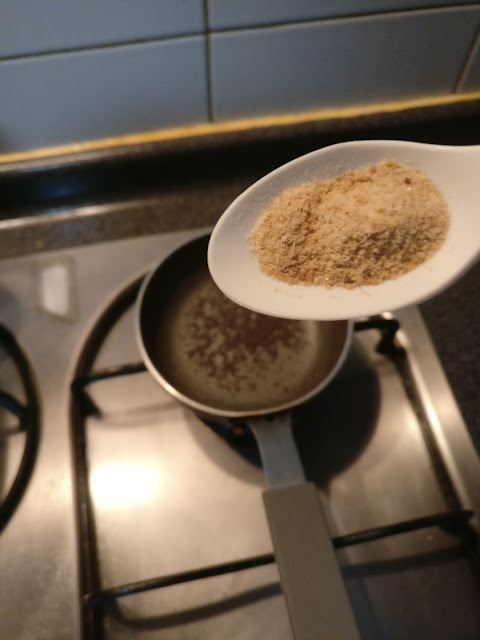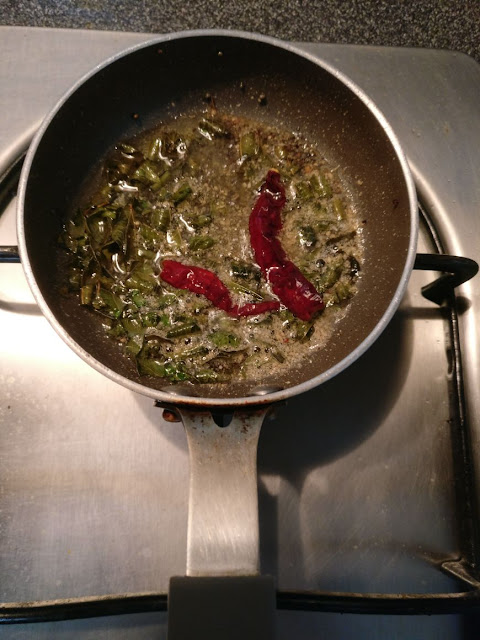Today we are going to learn how to make sambar in a pressure cooker. I used this method as this is less time consuming and easy. This is one such recipe which can be prepared when you are in a hurry to cook a meal and goes well with just steamed rice, idlis, dosas, vadas, uttapams.
The sambar can be of various types depending on the vegetable that you add to it. While making any type of sambar, add a good quality of aromatic sambar powder. Sambar powder can also be home made. Usually sambar is made using more than one mixed vegetable, yet there are sambar recipes where only one vegetable is used.
I have used yellow pumpkin and drumsticks.
Course : Main
Cuisine : South Indian
Serves : 4
Time required : 10 minutes for Preparation and 20 minutes for cooking = 30 minutes.
INGREDIENTS :
For cooking dal :
(1) Tuvar dal (Arhar dal) - 250 gms
(2) 1/4 teaspoon of Turmeric powder (Haldi)
(3) 1 Tomato - chopped
(4) 1 green chilli, slit
(5) 800 ml of water
(6) Salt to taste
Vegetables added are :
(1) 2 cups of Pumpkin (Kaddu) chopped into cubes
(2) 2 drumsticks, cut into smaller pieces
 |
| Pumpkin |
 |
| Drumsticks |
Spice powders added are :
4 teaspoons of Sambar powder. I used MTR Sambar powder.
For tempering Sambar :
(1) 2 tablespoon of Cooking oil
(2) 1 teaspoon of Black Mustard seeds
(3) 1 sprig of Curry leaves
(4) 1/4 teaspoon (3 pinches) of Asafoetida
(5) 2 whole red chillies
For garnishing :
Chopped Coriander leaves
Chopped Coriander leaves
PREPARATION :
(1) Rinse and chop 250 gms of Pumpkin into large cubes. If you want you can peel the Pumpkin, but I have not done.
(2) Cut the ends of the drumsticks and cut the drumsticks into 2 inch length pieces. I have used two drumsticks.
 |
| Chopped Drumsticks and Pumpkin |
METHOD :
(1) Rinse 250 gms of Arhar / Tuvar dal a couple of times in water.
(2) Put the rinsed Arhar dal in the pressure cooker.
(3) Add 800 ml of water, 1/4 teaspoon of Turmeric powder (Haldi) and, 1 green chilli (Slit) and 1 medium sized tomato (Chopped) in the pressure cooker.
(4) Add salt to taste.
(5) Cover the lid of the pressure cooker and pressure cook dal for 8 whistles on a medium flame. It depends on the intensity of the flame and the water type as to how many whistles are required to cook the dal. I live in Singapore and here it takes me 8 whistles whereas in India, my dal used to cook in just 4 whistles. So, first go for 4 whistles and see. If that does not cook the dal, then cook for 4 more whistles.
(6) Turn off the gas flame after 8 whistles and let the pressure settle down on its own. Then open the lid and check the dal.
(7) The dal should be completely cooked and mushy.
(8) Now we put the chopped Pumpkin and drumsticks into the cooked dal.
Add water, if necessary.
(9) Add 4 teaspoon of Sambar powder.
(10) Close the lid of the pressure cooker and pressure cook for 1 whistle. This is enough for cooking the vegetables like pumpkin and drumsticks. Turn off the gas stove.
(11) When the pressure is released on its own, open the pressure cooker.
(12) You could have cooked the veggies by directly cooking instead of pressure cooking. That is without closing the lid of the pressure cooker, keep the pressure cooker on the gas stove and
let the pumpkin and drumsticks cook in dal and become tender. Do not over cook.
Tempering Sambar:
(1) Take three tablespoon of Cooking oil in a tempering ladle.
(3) When the Mustard seeds crackle, then add 10 - 12 Curry leaves.
(4) Immediately add 3 pinch of Asafoetida (Hing) powder.
(5) Add 2 dry whole red chillies (By breaking them).
(6) Mix well with the spoon till the Curry leaves become crisp and red chillies change colour, but do not let them burn. This will take only 4-5 seconds.
(7) Switch off the gas flame and immediately add the tempering mixture to the Pumpkin sambar.
(8) Add chopped Coriander leaves.
Mix well.
(9) The Pumpkin Sambar is ready.
(10) Transfer it on to a serving bowl.
(11) The Pumpkin Sambar goes well with just plain steamed rice and with Idli, Dosas, Uttapam, Medu Vada and so on.






















No comments:
Post a Comment